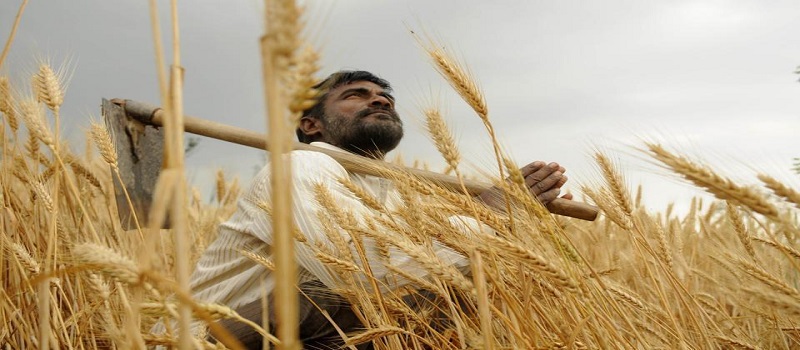Alternatives to burning can increase farmer’s profits and cut pollution
A New financial find out about within the magazine Science presentations that 1000’s of farmers in northern India may just build up their income in the event that they stop burning their rice straw and undertake no-till practices to develop wheat. Alternative farming practices could also minimize farmers’ greenhouse gas emissions from on-farm actions by way of up to 78% and lend a hand lower air air pollution in cities like New Delhi.
The new learn about compares the prices and benefits of 10 distinct land preparation and sowing practices for northern India’s rice-wheat cropping rotations, which are spread throughout more than 4 million hectares. The direct seeding of wheat into unplowed soil and shredded rice residues was once the best option — it raises farmers’ earnings thru upper yields and savings in labor, fuel, and machinery costs.
The study, carried out via an international group of eminent agriculture and environmental scientists, was once led through researchers from The Nature Conservancy, the International Maize and Wheat Improvement Center (CIMMYT), the Indian Council of Agricultural Research (ICAR), the Borlaug Institute for South Asia (BISA) and the University of Minnesota.
A burning issue
To quickly and affordably clear their fields to sow wheat each year, farmers in northern India burn an estimated 23 million heaps of straw from their rice harvests. That enormous mass of straw, if packed into 20-kilogram 38-centimeter-high bales and piled on top of one another, would succeed in a top of over 430,000 kilometers — about 1.1 times the space to the moon.
Regulations are in position in India to scale back agricultural fires but burning continues because of implementation challenges and lack of clarity concerning the profitability of exchange, no-burn farming.
Farmers have possible choices, the learn about displays. To sow wheat immediately without plowing or burning rice straw, farmers need to purchase or rent a tractor-mounted put in force referred to as the “Happy Seeder,” as well as attach straw shedders to their rice harvesters. Leaving straw at the soil as a mulch helps capture and retain moisture and also improves soil high quality, according to M.L. Jat, CIMMYT Principal Scientist, cropping techniques specialist and a co-author of the learn about.
Win-win
The Science learn about demonstrates that it’s conceivable to reduce air pollution and greenhouse gasoline emissions in a way that is winning to farmers and scalable.
The paper presentations that Happy Seeder-based techniques are on reasonable 10%–20% more profitable than straw burning options.
“Our study dovetails with 2018 policies put in place by the government of India to stop farmers from burning, which includes a US$166 million subsidy to promote mechanization to manage crop residues within fields,” said Priya Shyamsundar, Lead Economist, Global Science, of The Nature Conservancy and first creator of the find out about.
Shyamsundar famous that quite few Indian farmers lately sow their wheat the usage of the Happy Seeder however manufacturing of the Seeder had higher lately. “Less than a quarter of the total subsidy would pay for widespread adoption of the Happy Seeder, if aided by government and NGO support to build farmer awareness and impede burning.”
“With a rising population of 1.6 billion people, South Asia hosts 40% of the world’s poor and malnourished on just 2.4% of its land,” stated Jat, who just lately won India’s prestigious Rafi Ahmed Kidwai Award for exceptional and impact-oriented research contributions in natural useful resource management and agricultural engineering. “Better practices can help farmers adapt to warmer winters and extreme, erratic weather events such as droughts and floods, which are having a terrible impact on agriculture and livelihoods. In addition, India’s efforts to transition to more sustainable, less polluting farming practices can provide lessons for other countries facing similar risks and challenges.”
In November 2017, greater than 4,000 colleges closed in Delhi because of seasonal smog. This smog increases all the way through October and November when fields are burned. It causes main transportation disruptions and poses well being risks across northern India, together with Delhi, a town of more than 18 million folks.
Some of those issues will also be resolved by means of direct sowing technologies in northwestern India.
“Within one year of our dedicated action using about US$75 million under the Central Sector Scheme on ‘Promotion of agriculture mechanization for in-situ management of crop residue in the states of Punjab, Haryana, Uttar Pradesh and NCT of Delhi,’ we could reach 0.8 million hectares of adoption of Happy Seeder/zero tillage technology in the northwestern states of India,” said Trilochan Mohapatra, director normal of the Indian Council of Agricultural Research (ICAR). “Considering the findings of the Science article as well as reports from thousands of participatory validation trials, our efforts have resulted in an additional direct farmer benefit of US$131 million, compared to a burning option,” defined Mohapatra, who could also be secretary of India’s Department of Agricultural Research and Education.


